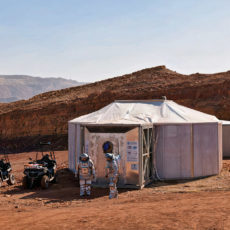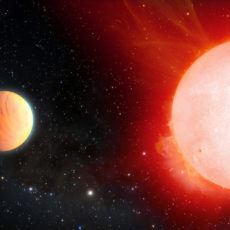
ESA’s Mars Express has captured an interesting image of spider-like carbon dioxide deposits that can be seen scattered across towering hills and expansive plateaus. These dark spots on the surface are actually formed by escaping gas and material.

These spider-like objects are formed when spring sunshine falls on layers of carbon dioxide deposited over the dark winter months. The sunlight basically causes the carbon dioxide ice at the bottom of the layer to heat up and turn to gas, which subsequently builds up before breaking through slabs of overlying ice.
- Feed a passion for science and technology – Kids can learn more about the challenges of space exploration with this LEGO Technic NASA Mars Rover...
- Conduct a test flight – This advanced building kit for kids ages 10 and up includes a buildable toy version of NASA’s Ingenuity helicopter, which...
- AR brings the mission to life – The accompanying augmented reality app experience lets kids dive into the details of the rover and its mission
The emerging gas, laden with dark dust, shoots up through cracks in the ice in the form of tall fountains or geysers, before falling back down and settling on the surface, creating dark spots. This same process creates characteristic ‘spider-shaped’ patterns etched beneath the ice: the very same patterns shown here,” said the ESA.











